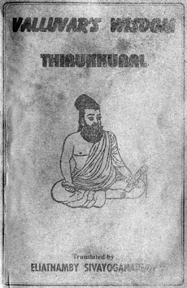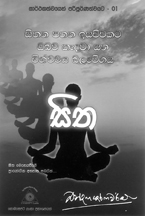|

Portrayal of childhood in Sri Lanka
Reviewed by Ranga CHANDRARATHNE
Childhood experiences are vivid and diverse from land to land and
from diverse cultures. Childhood spent in highly urbanized environment
particularly in congested cities and suburbs is quite different to that
spent in far away hamlets.
|

Tales from the Tree House
by Sakuntala Sachithanandan |
It is this unique element of authenticity which makes 'Tales from
Tree House' by Sakuntala Sachithanandan, a true portrayal of childhood
in Sri Lanka. The stories in the collection appeared in a national
newspaper. The stories are from a diary of Deepaka, a child who called
his diary 'Dear Diary' which is supposed to be hidden in a tree house
built on a huge Mara tree.
In the first diary entry, the child describes the Mara tree where the
'Dear Diary' is hidden: 'you know Diary, this Mara tree has a
wonderfully peculiar history of sorts! It has many fat trunks like an
elephant's legs springing up from a huge horizontal trunk. Well, long
Before we built Our house, this whole land was used by Aunty Rani and
Uncle Sunda.' One fine day a pulung tree which had been rotting inside,
fell down...' It is obvious the narrator of the stories.
Deepaka represents a generation of children who grew and walked into
their adulthood in vast rural hinterland of Sri Lanka. Their childhood
is different to that of children who grow up in metropolis Colombo or
suburbs. The life and childhood of Deepaka which he recalls to 'Dear
Diary' evolved against the backdrop of calm and quiet life of
agricultural Sri Lanka. Although the diary entries are somewhat similar
to Anne Frank's Diary, except using dairy entry as a narrative devise,
'Tales from the Tree House' is an authentic account of childhood in Sri
Lanka.
One of the significant features of the book is author's ability to
devise a diction which is very much English yet capable of conveying
childhood experiences in Sri Lankan in that milieu. Among other things,
it seems that the author has understood the fine art of storytelling as
stories grip the attention of the reader from beginning to the end.
Authenticity of voice is felt throughout the book.
Deepak's diary entries recount the childhood adventures and the
real-life characters, some of whom are members of Sri Lankan extended
family and others are personalities associated with Deepak's childhood
and of course, his peers.
One of the interesting stories is where Deepaka and his friends
impersonate blinds and collect proceeds in the village 'Pola' or a
weekly fair. Apart from the story, the author has also depicted vividly
the festive atmosphere in the village weekly fair.
The story 'Thunthota Oya and More' is not only an interesting one
where the children play in a tributary of a river but it also provides
the reader with fascinating account of the village environment.
'We were dreamily floating looking up at the blue bowl of the sky.
Parrots and mynahs wheeled across the fleecy clouds GLOP, GLOP,
GLUG-GLUG! Our hands and feet paddled in the cold water of Thunthota Oya!
The closest we'd ever got to Heaven, decided Ashan and I
enthusiastically. Nimal, Iresh and Rohana, Mudiyanse's little son,
faithfully agreed.
Cool and green and fluttery Kumbuk and Mara trees and enormous bamboo
bushes arched over the river. This was our driver Mudiyanse's village of
Thunthota and we'd been invited to spend the day.
A swim suit for Akki had been ruled out (despite much grumbling and
sulking on Akki's part) as Ammi and Appa decided it would offend the
sensibilities of the village folk of Thunthota. So there she was,
cavorting in the river, in a cloth like any village damsel.
The story is about the upper middle class family from Colombo
spending the day in the village of Thunthota. The author describes the
atmosphere of the river and the cool and the green canopy provided by
Kumbuk and Mara trees. Though unwittingly, the author has highlighted
the conservative culture in the village with its ingrained prejudice
towards women. Though the swim suit is ideal for swimming, the parents
do not allow the girl to wear a swim suit which is deemed as culturally
inappropriate to village. Apart from the sheer authenticity of the
stories, 'Tales from the Tree House' is marked for its lucid and
down-to-earth language and the vivid realisation of the village life in
Sri Lanka. Though it is highly doubtful whether we still have such
villages and if even the children in the village, could enjoy such a
lovely childhood amidst of flourishing nature. In a way, two book
portrays the childhood of a bygone era like the one which great Sinhala
author Martin Wickremasinghe portrayed in 'Madol Doova'. Life of today's
children is very busy revolving among numerous tuition classes, classes
for dancing, music and swimming and a heap of home work. Regrettably, we
doubt whether today's children enjoy such a vibrant childhood.
At a time, when bed-time story telling has relegated to the past, the
book offers a collection of stories for children with distinctly Sri
Lankan flavour.
Since the childhood experiences and the adventures are genuinely Sri
Lankan, the book would be a good start for inculcating reading habit in
children.
Noble thoughts to guide human life
Reviewed by Chelvatamby Maniccavasagar
|

Valluvarís Wisdom Thirukkural
Translator: Eliathamby Sivayoganathan
(B30/3/2 Soysapura Flats, Moratuwa
|
Thirukkural is a poetic composition of great antiquity in the Tamil
literature. Many great minds have shed their powerful, radiant light on
this gem and justly famous classics of Tamil literature.
In its essence Thirukkural is a treatise par excellence on the art of
living. Thiru Valluvar, the author diagnoses the intricacies of human
nature with such penetrating insight perfect mastery and consummate
skill absorbing the most subtle concepts of modern psychology, that one
is left wondering at his sweep and depth.
His prescriptions, leavened by godliness, ethics, morality and
humaneness are sagacious and practical to the core. They cut across
castes, creeds, climes and ages and have a freshness which makes one
feel as if they are meant for the present times.
The uniqueness of Thirukkural is that the noblest thoughts are
expressed with master strokes of elegance and charm, imaginative
splendour and poetical grandeur. Thiruvaluvar postulates a comprehensive
code which would meet the realities of all major situations that life
gives rise to.
Aspiring for a classless society is an ideal but the existence of the
rich and the poor classes of men is a reality.
Further, Thiruvalluvar appeals to both of them to conduct themselves
in a certain ethical way towards each other so that they lead a
harmonious way of living. He exhorts the rich to give to the poor and
mitigate the poor man's hunger and he also advises the wealthy to give
alms to beggars without hiding and in the same breath asks the beggars
not to feel angry when the rich man refuses to give.According to
Thiruvalluvar, wealth is important for all of us and so he asks men to
create wealth through righteous ways. In fact, man is not just an
individual.
He is a social being - a citizen entitled to what we have resolved to
secure in the preamble of our constitutions: Justice - social, economic
and political, liberty of thought, expression, belief, faith and
worship, equality of status and of opportunity and to promote among them
all, fraternity assuring the dignity of the individual.
The Thirukkural defines the pathways for man to tread to reach the
human goals. Man is the architect of his own life and the life of the
society.
He can create a heaven on earth as great men like Mahatma Gandhi
attempted or degrade it into hell as Hitler did, bringing misery and
suffering on a global scale. Indeed Thirukkural is a human document
shining as a guideline to humanity to promote human happiness, harmony
and peace.
Furthermore, the Thirukkural was written 2,000 years ago and it has
been poetically acknowledged by Mahakavi Subramania Bharathy when he
says that Tamil Nadu has attained glory by giving to the world the
Thirukkural's author "Thiruvalluvar."
The Thirukkural contains three parts, dealing with three aspects of
human pursuits; 'Aram,' 'porul' and 'inbam'. In fact, such a great
literary work, the first among the Tamil classics was translated by
several people into several languages. Suddhanandha Bharathi, V.V.S.
Aiyer, K.M. Balasubramaniam, P.S. Sundaram and a host of others rendered
Thirukkural into English.
Thus Thiruvalluvar has had so many translators but it cannot be said
that he has found his completely satisfying English translator
yet.Inspired by the ethical contents of Thirukkural, Eliathamby
Sivayoganathan who is a graduate and a retired Deputy General Manager of
a Government corporation has translated the Thirrukkural into English.
There have been different versions of the same text because every
translator sets his own priority in translation. Rajaji's version
concerns itself with Thiruvalluvar as a thinker and a teacher rather
than Thimvalluvas as a poet. V.V.S. Aiyer brings out the vigour and
wisdom of Thirukkural.
No translation seems to render justice to the merits of the original
text since Thirukkural is truly an 'apple of gold in a network of
silver.'
The preservation of meaning of the source text in the target language
is an important aspect in translation. In fact, the translator must
actualise the implicit sense, the denotator, connotative, intentional
associative range of significations which are implicit in the original.
Thirukkural is thus a document of universal application.
The translator has struck a new path in studying and investigating
the Thirukkural from a scientific angle. Hence, everyone should possess
this Thirukkural wisdom (Thirukkural).
The Nature of Sri Lanka:
Meaningful and beautiful!
Reviewed by Gehan De Silva Wijeratne
The Nature of Sri Lanka,Nadaraja, L. (2008), the Nature of Sri Lanka.
Wildlight (Pvt) Ltd., Colombo, 318 pages,
Starting from around the early 2000s, there has been a flowering of
beautiful books on Sri Lankan wildlife. This followed a renaissance in
bio-diversity research in the late 1980s led notably by Rohan
Pethiyagoda and his team of researchers from the Wildlife Heritage
Trust.
It is no accident that the flowering of wildlife books followed the
renaissance in research and also the elevation of wildlife into the
economic agenda from wildlife tourism. All of these books have
contributed to a heightened awareness of Sri Lanka's bio-diversity and
had varying impacts on wildlife photographers. Many Sri Lankan wildlife
books pleasurably burden the shelves of my book cases. However, the
nature of Sri Lanka is notable for having an immediate and dramatic
impact on how I take photographs.
I had barely skimmed the pages of the book and a deep message had
been imprinted in my mind. The need, to see the animal holistically in
its environment and to return to some of the classical rules of
composition. It is not that the books by other photographers did not
seem to understand composition and a sense of place. They did. But the
imagery which dominated those books (and I confess my own efforts as a
nature photographer) were those of the 'frame filler'. To understand
what I mean compare the opening images, such as the Scarlet Minivets in
the rain or the closing images of the book, such as the eyes of a
leopard peering through a bush, shown in black and white.
In the early 2000s, a new generation of wildlife photographers had
begun to comb the wilds of Sri Lanka. They were a tech savvy breed. They
carried laptops and their conversations were interspersed with gigs of
storage, files sizes in mega pixels and above all the 'frame filler'.
With long lenses (covered in camouflage or sleek black non reflective
coatings) suspended on bean bags or Wimberly tripod heads, they looked
like special forces units out on patrol. As mile after dusty mile was
clocked, sightings of leopards and other animals were measured in terms
of 'frame fillers'. If it was not a frame filling image, it did not
count. A leopard sleeping on a waterhole embankment at a distance was
not worth it and more than one photographer would drive off scornfully,
confident in the knowledge he had already gardened a few Gigs of frame
fillers in his compact flash cards.Species were photographed 'frame
filling' almost to the equivalent of a taxonomist looking through a
microscope. A bird or mammal once photographed with enough pixel detail
to show each feather or hair of fur was deemed 'done' and safely ticked
off the list. A few charismatic species such as the leopard could never
be done because the thirst for more was unquenchable. The obsessive
'leopard hunters' lived hell on earth as the fire that burned within for
a better leopard image could never be put out.
Luxshmanan Nadaraja's work is a refreshing reminder of basics. Seeing
the natural world for its beauty and aesthetics. A communion with
nature. A leopard is not a leopard until it is seen in the context of
its habitat. Many of the wildlife books somehow had the overpowering
presence of the photographer lingering in the consciousness of the
reader.An image was something about the photographer's skill to get
close, or so close and his or her array of technologically advanced,
vibration reducing prism technology, apochromatic lenses, write speeds
to the flash cards and so on.
Suddenly, we now have a book, where the world seems a calmer, quieter
place, Technology has become irrelevant and the photographer has been
banished and we are left to enjoy images where no one needs to get
close. We see an Ashy Prinia singing in the reeds, like how we would see
it. Elephants, even a group of them, are small, like we usually see
them, dwarfed by the vastness of the wilderness.Although it is billed in
a sense as Luxshmanan's book, I interpret it as joint effort with his
wife Nelun Harasgama Nadaraja, the designer of the book. Nelun has
designed many of the beautiful wildlife books which have come out
recently. But here in this book there is a natural symbiosis, her
creativity has found the raw material to layout a creation which is
different from other books.
The quality and the sense of space in the images lend themselves to
her characteristic bold use of white space. There are many double page
panels like this. Other layouts may use the entire page but are not
enslaved by 'frame filler' images which need the subject species to be
all domineering. An oriental dwarf kingfisher is boldly laid across a
double page spread (in of one the largest books of its genre) and is
diminished in relative size but enhanced in impact by virtue of it being
only a sixteenth of the space. The designer and the photographer both
have an empathy for space which fuses well in this book.Perhaps I
exaggerate a little. Not every image is about taking a step back and
showing a living being in its environment. Luxshmanan has a fair number
of images which are frame filling and some pages are seemingly busy with
montages of rectangular cropped images, packed against each other.
Nevertheless the book is underlain by a confidence to step back give
space. There is an over-riding theme to see the wilderness in its entire
vastness and for it not to be measured by the sum of the individual
animals which have to be captured in the 'frame filler'.Photography is
always subjective and the choice of individual images are an emotional
choice of the photographer or one that was needed for a particular
topic. As a result every reader will have images they see as being a
little weaker than others. But the book as a whole is wonderfully
crafted and will influence the way others photograph and publish their
work in the future.
Sri Lanka has been blessed with many wonderful books on wildlife in
the last decade. I think this book more than any other, demonstrates the
ability of its citizens to combine authorship, photography and design to
produce books which are both meaningful and beautiful.
The reviewer Gehan de Silva Wijeyeratne is a British Chartered
Accountant and Banker turned wildlife celebrity. He is CEO of Jetwing
Eco Holidays.
Book launch
From effectiveness to perfection
 |
"Sarthakathvayen Paripoornathwayata 1" and "2" (From Effectiveness to
Perfection 01 and 2) authored by Chandana Gunawardene will be launched
at the Colombo Public Library Auditorium on December 27 at 9.00 a.m.
Book 1 deals with the power of human mind while Book 2 lays the
guidelines for a prosperous life. To coincide with the event a practical
workshop on Training of Mind to accept challenges will also be held.
Well-known Counsellor Chandana Gunawardene is also Managing Director
of Centre for Operating of Mind and Self-Empowering Training.
|
'Veven Upanniya'
 |
Siri Ediriweera's latest Sinhala novel, 'Veven Upanniya' will be
launched at Dayawansa Jayakody Book Exhibition Hall, Ven. S. Mahinda
Mawatha, Colombo 10 on December 22 at 10 am.
'Veven Upanniya' is a Dayawansa Jayakody publication.
|
|

